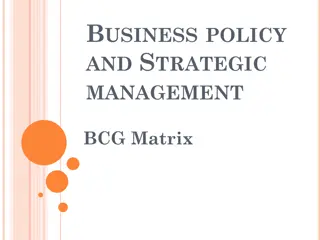Navigating the Bear Market: Strategies for VC Survival
Transitioning from a phase of monetary expansion to contraction, VC firms are adapting to new macro realities by emphasizing quality, fundamentals, and proactive fundraising. With a focus on maintaining relationships, reducing burn, and staying engaged with the right investors, VCs aim to navigate the challenges ahead.
Download Presentation

Please find below an Image/Link to download the presentation.
The content on the website is provided AS IS for your information and personal use only. It may not be sold, licensed, or shared on other websites without obtaining consent from the author. Download presentation by click this link. If you encounter any issues during the download, it is possible that the publisher has removed the file from their server.
E N D
Presentation Transcript
Surviving Bear Markets RBCx Capital We power bold. We power bold.
How Did We Get Here? We are transitioning from an environment of unprecedented monetary expansion to one of equally unfamiliar monetary contraction. The scale and scope of the quantitative easing programs implemented by the Bank of Canada and the Federal Reserve in response to the pandemic meaningfully contributed to an unnatural inflation in tech asset values. 2 Surviving Bear Markets
Carryover Dry Powder Luckily, venture capital has a very long tail, and the funding ecosystem will take a long time to respond to the new macro realities. Dry Powder ($) Dry Powder ($) Undeployed US VC capital was an estimated $223B in 2021 $222 $222 $184 $184 $154 $154 2019 2019 2020 2020 2021 2021 In the recently released 2022 Investor Survey published by Pitchbook & Collision, when investors were asked to evaluate external pressures facing the VC ecosystem such as public market volatility, increasing interest rates and talent market shifts, nearly half (45%) of respondents disagreed that their investment activity will markedly decrease from recent years. 3 Surviving Bear Markets
What Does This All Mean? The next 18 to 24 months will be characterized by a flight to quality. VCs have capital to deploy, but they will be markedly shifting their priorities and strategies. Re-Focusing on fundamentals More extensive due diligence Applying greater discipline in relation to capital allocation Emphasis on gross margin and capital efficiency 4 Surviving Bear Markets
Proactive Fundraising Transitioning to proactive and anticipatory fundraising is critical. In tandem, take tangible steps to reduce burn and extend runway. This allows you to maintain optionality and to maximize the probability of fundraising in a more hospitable macro environment. Focus on constantly sharing your story don t wait until you re in a pitch to do this. Develop strong relationships with VCs well before you think you ll be fundraising. Stay in touch with funds even when you re not fundraising. Keep them excited about what you re doing. Maintain a longitudinal focus on your network. Find creative ways to stay in contact. 5 Surviving Bear Markets
Proactive Fundraising Maintain a pipeline of relevant high-conviction investors. Ensure that you are engaging with the right investors, and that you are maintaining an ongoing dialogue. In bear markets investors revert back to familiarity. Investor Alignment Longitudinal Engagement Leverage public databases for quick access to relevant information to build a strong pipeline. Look for VCs that have already invested in your geography to make the best use of your time. Make sure your dataroom & presentations are constantly evolving and remain up to date. Look for VCs whose investment thesis and focus matches what you re building. Send out a monthly or quarterly newsletter to VCs in your network to keep them up to date on your progress. Understand the portfolio construction of the funds, and which stage they invest in. Keep in mind that the ability to sustain a long term relationship with investors is critical. Most VCs won t invest in startups that directly compete with their portfolio. 6 Surviving Bear Markets























